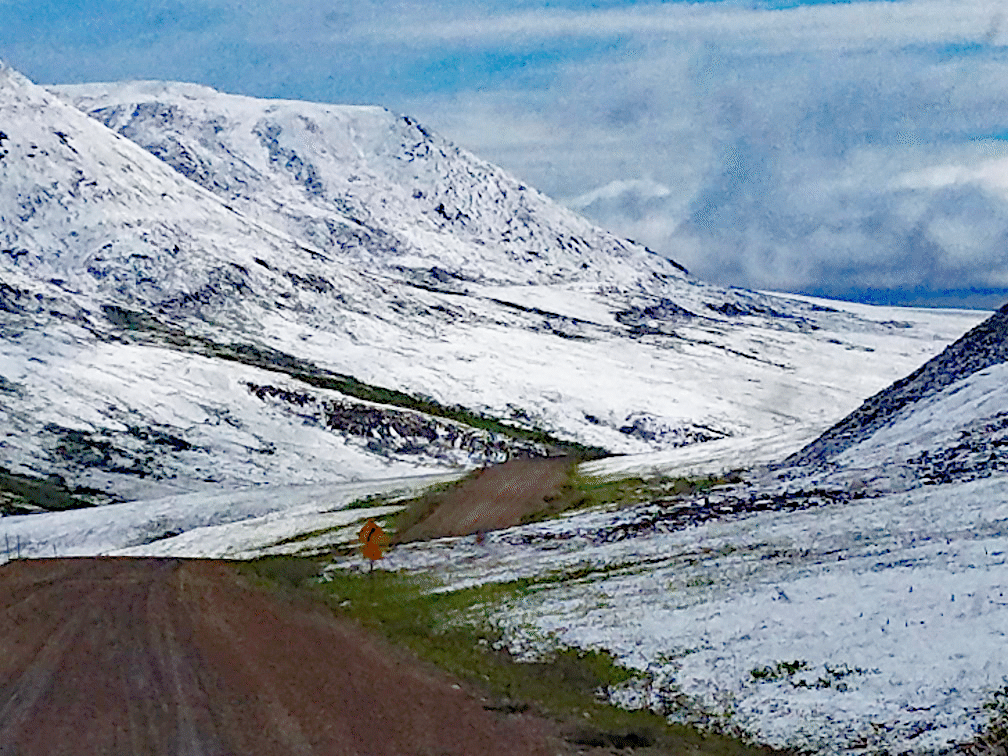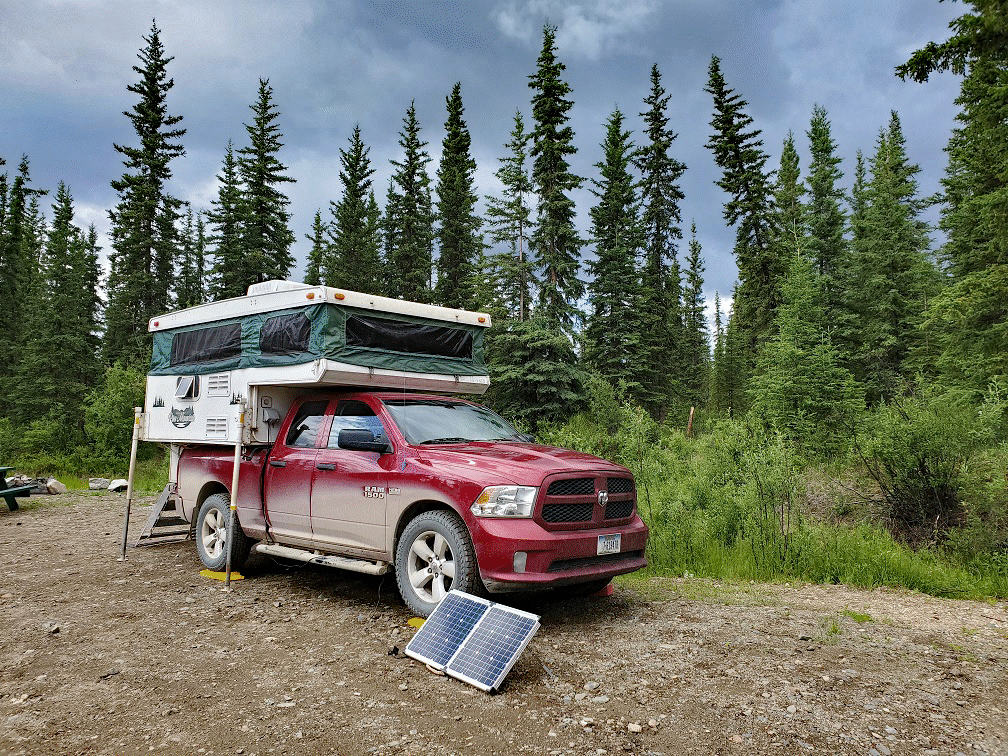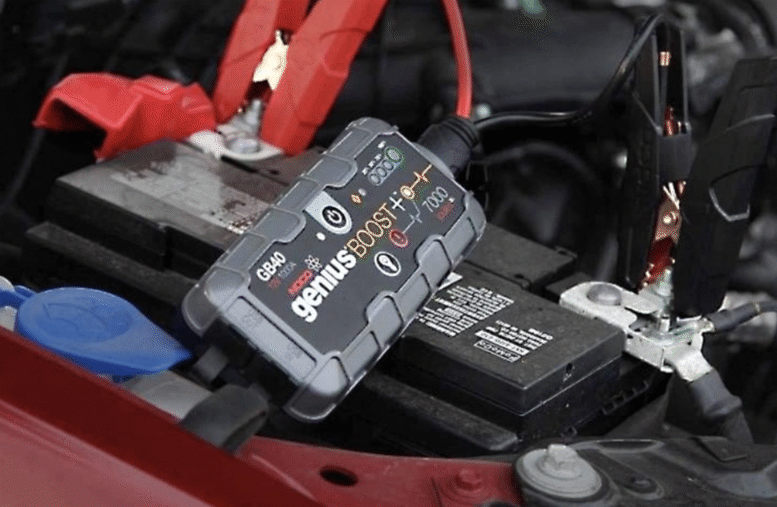
EVEN THOUGH IT WAS ALMOST THREE YEARS AGO, I remember that day, that moment, as though it were this morning. For what seemed like forever, but was hardly more than a heartbeat, I paused and looked at the road ahead of me.
We were at the intersection of the Klondike and the Dempster Highways about forty miles east of Dawson City, Yukon. Ahead of us was 1,000 miles of gravel and dirt road that would eventually take us to the Arctic Ocean at the village of Tuktoyaktuk in the Northwest Territory. The last 152 kilometers (95 miles) of the road had just been completed the previous fall.
But I’m getting ahead of myself. Now you must realize that Pamela (67) and I (75) had been nomads for a good four years before this and taking the roads seldom traveled is what we do. We work as Park Service volunteers at Glacier National Park where we live in our camper-trailer sixteen miles into the Rocky Mountain wilderness where, except for the village of 100+ people sixteen miles from us, the next town is over 50 miles away. We winter in the southwest where we’re often camped 60 miles from the nearest highway. So we were far from strangers to wilderness, isolation and unpaved roads. We had always wanted to go into Canada and Alaska but we were always working. In 2019 we told the park that we’d help out in May but we were going north. We were prepared and we had the skills necessary, but what was in front of us was different than anything else we’d ever encountered.
OUR PREPARATIONS
We have a 2013 Dodge Ram half-ton heavy with the 6’6″ bed. “Heavy” means that we beefed up the suspension system, etc., until it can do anything a 3/4 ton can do. Maybe more. Since we spend most of our time on dirt, gravel or secondary roads, we opted for a heavy traditional metal suspension system. Inflatable suspensions have their place, but that place isn’t in northern Canada or Alaska. What do you do if you poke a hole in the inflatable air bag and you’re a two days drive from the nearest paved road?
Normally our home is a twenty-foot trailer we called Nitsitapiisinni (Blackfeet for ‘our way of life’). If you drive to the Arctic you are going to travel many thousands of miles, even if you do nothing but drive up, turn around and come back. If you take a trailer with you, you have four more tires to replace and potential road damage. We didn’t want to do that to Nitsitapiisinni. Knowing that we were going to face some pretty challenging roads, we bought an old pop-up slide-in camper to put on the back of the Ram. A pop-up slide-in is much lighter than a hardside, so we were well within our cargo capacity.

Not pulling our trailer not only avoided damage to it but gave us the freedom to go just about anywhere — and we did. It is possible to go to Alaska without getting dirty, but what fun would that be? The type of rig you take depends upon what you plan to do. If you are like us and go places where you have to climb over rocks, transit beaches, plough through snow or mud and are days from the nearest paved road, then you want to go rugged and simple. Not everyone, however, thinks like us, and, I reiterate, you can go in a van, Class A, B or C or drag your trailer. Your activities will reflect your decision.
Having some years of nomad travel under our belts, we had a good idea what we needed to do to get ready. We have always used solar and still travel with a 100-watt portable solar panel as backup even though we have 600 watts on the roof. I rewired the electrical system in the pop-up so that, with the flip of a switch, I could either charge from the solar panel or the truck as we traveled. I ran a volt meter from the house battery to the truck dash so I could monitor the system. Most seven-pin trailer/hauling systems are always powered. That means that when hooked up the house battery can take power from the truck battery and you would end up unable to start your truck in the morning.
I don’t say that lightly. My system relied on my remembering to flip the switch. We were camped along a beautiful lake 178 miles from the nearest town when I forgot the switch. The next morning the truck battery was too low to start the truck. No, we didn’t panic because as nomads, who live like this most of the time, we have a Noco GB-40 Genius Boost; a small, rechargeable power pack. The Noco is so powerful that I’ve jumped multiple trucks with a single charge. The point is, however, no matter how experienced you are, you can make mistakes and you must be prepared to deal with them.

I also added large taillights to the slide-in. Many do not come with taillights because it is expected that people can see your truck lights. Since that wasn’t true for us, and I really want to be seen, I wired the new lights. I don’t know about other slide-ins, but this one had a funky wiring pattern from the seven-pin. If you find yourself in this position, there are sites on the internet that will show you how the seven-pin receiver on your tow-vehicle is wired. Since someone had messed with the wiring and actually changed wire color in mid-run, it took me several days to figure out what wire went where. If you don’t have the experience to do this yourself, look for someone who can wire a trailer. As good as they are, house electricians and automobile mechanics don’t generally have either the knowledge or experience.
The furnace, stove and fridge ran on propane but the tank was a small 3.5 gallon tank. I made a propane line extension so that I could hook to a larger tank sitting on the ground if needed. As it turned out, even with the furnace, stove and fridge running every day, we never ran short. As you might guess, propane is a major house fuel in northern Canada and Alaska, so we never had a problem finding it.
The slide-in came equipped with a bathroom and a shower. The black water tank was so small it would have needed dumping daily. We had no use for that, so I removed both. We used the trusty nomad standby . . . a five-gallon bucket. That gave us more storage as well as reducing the weight. Our sink water also ran into a bucket. Lighter, more efficient and easier to empty.
By the time we were ready to go, the slide-in was a sweet rig. Pamela did a lot of work on cushions, cabinets, etc. We really could not have been more comfortable.
The last thing we bought were tires. The Ram’s tires were less than two years old but had almost 30,000 miles on them. They would have lasted twice that, even under the conditions to which we subject them in the lower-48. Nevertheless, hearing all of the horror stories about blowing tires, I went to my trusted tire shop in Columbia Falls, MT. They had sold me heavy-duty, all-terrain tires for years. I told them our plans and drove away with the big-brothers to our previous tires. They cost me almost $400 each, but as of February 2022 they not only survived 45,000 miles of rough Yukon-Northwest Territory roads, but still look like they’re brand new.
As far as I’m concerned the slide-in was the right rig for the trip. However, sleeping in a pop-up in bear country is no safer than sleeping in a tent, so you have to take all the bear precautions you would with a tent. And we had one time when the vibration of travel loosened a screw in the opening-closing mechanism. I had to literally “field strip” the mechanism before we could move. Whatever rig you take you need to know it well.

That was one of my favorite drives! My son and I fixed up the back of our pickup (read mattress and electric rechargeable lantern) a few good sleeping bags and a few cans of bear spray. We set out a geocache at the Arctic Circle and a geotag at Innuvik on the back of the bill board. In those days we had to fly to Tuktoyuktuk where we took a walk about with George. My husband still thinks we tweaked his newish pickup and well, maybe we did on one of those potholes. Great times!
I can’t wait for the next installment of this story! I have always wanted to make that drive, but as a solo person (not a mechanic, not an electrician), I let the warnings sway me. But one day, the stars will line up and I’ll make that drive! Until then, I’ll take the trip vicariously. Thanks for Part One!
I rode my motorcycle the length of the Dempster 13 years ago after riding the length of the PanAmerican Hwy from our home in Alaska to Ushuaia, Argentina.
The Dempster was the biggest challenge of that WHOLE 6 month trip.
Howdy, is the Pan.american HWY still functional ? Have been told that the road is terrible & the repairs to it are inexistent.
The Dempster is a wonderful memory from a 2010 motorcycle trip. Tombstone Park was amazing as well. Hoping to go back this year on 4 wheels now that the borders are finally opened. Gas prices be damned! Thanks for the tips, especially the Noco jump starter. I just ordered the GB-40.
We would like to just drive to Anchorage, but the trip you’re describing sounds fantastic.
I can’t wait to read the rest!!!!
Same here, Waiting on the second installment !
Sounds Awesome !!